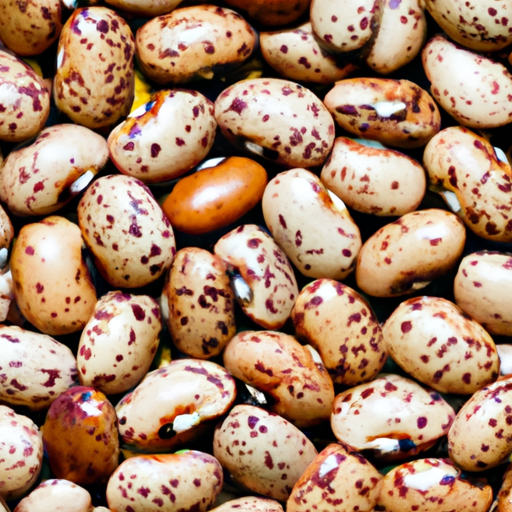The Versatility of Dried Pinto Beans: From Classic Soups to Plant-Based Powerhouses
Dried pinto beans are a pantry staple that deserve a spotlight in every kitchen. Not only are they a versatile ingredient, but they also pack a powerful nutritional punch. Whether you’re a seasoned cook or just starting your culinary journey, these little beans are sure to become a flavorful addition to your cooking repertoire. In this blog post, we’ll explore everything from the taste and common uses of dried pinto beans to their nutritional value and intriguing history.
Taste and Texture
Dried pinto beans are loved for their mild and slightly nutty flavor. They have a creamy texture when cooked, making them an excellent choice for a variety of dishes. This makes them an ideal canvas for absorbing the flavors of herbs, spices, and other ingredients they are cooked with. Whether you choose to prepare them with a rustic touch or create a gourmet masterpiece, dried pinto beans will never disappoint your taste buds.
Versatile in the Kitchen
From hearty stews and soups to Tex-Mex favorites, dried pinto beans are a crucial ingredient in many classic dishes. They are the foundation of the famous Mexican dish “frijoles refritos,” or refried beans, which are commonly used as a filling for burritos, tacos, and enchiladas.
Their versatility doesn’t stop there! Dried pinto beans can be blended into a creamy dip or pureed to create a balanced spread for sandwiches and wraps. They also make a savory addition to salads, vegetarian patties, and grain bowls, providing a substantial protein boost while adding a rich, earthy flavor.
Nutritional Powerhouse
Dried pinto beans are not only delicious but also loaded with essential nutrients. They are an excellent source of plant-based protein, making them a valuable addition to a vegetarian or vegan diet. Additionally, these beans are rich in dietary fiber, which aids in digestion and helps maintain a healthy weight.
Pinto beans are also a good source of iron, magnesium, and folate, which play vital roles in energy production and cell function. Incorporating dried pinto beans into your meals can help promote heart health, stabilize blood sugar levels, and support overall well-being.
From Ancient Beginnings to Modern Marvels
The history of dried pinto beans traces back to ancient times, with evidence of their cultivation dating back over 7,000 years. Native to the Americas, pinto beans were a dietary staple for indigenous cultures long before they made their way to other parts of the world. The name “pinto” translates to “painted” in Spanish, referring to the bean’s characteristic mottled appearance.
Today, pinto beans are widely cultivated across the globe and have become a beloved ingredient in various cuisines. With their rich history and global popularity, dried pinto beans serve as a testament to the enduring culinary traditions that connect us all.
So, head to your pantry, grab a bag of dried pinto beans, and get ready to embark on a culinary adventure that spans centuries. Whether you’re a traditionalist who loves classic comfort food or an innovative cook seeking creative plant-based alternatives, the humble dried pinto bean has got you covered. Its mild yet satisfying flavor and versatility make it an ideal ingredient for any meal.
Remember, before using dried pinto beans in your recipes, ensure to soak them overnight and follow the cooking instructions to achieve perfectly tender and delicious results. So, let your creativity run wild and savor the delightful possibilities that dried pinto beans bring to your table!
Dried Pinto Beans
Origin: Pinto beans have been cultivated for thousands of years and are thought to have originated in Mexico and Central America. They have since become a staple in many cuisines around the world.
Common Uses: Dried pinto beans are commonly used in various dishes, including Mexican and Southwestern cuisine. They are often cooked and used in stews, soups, chili, and refried beans. In Mexican cuisine, they are a key ingredient in dishes like frijoles de la olla and chiles rellenos.
Nutritional Benefits: Dried pinto beans are highly nutritious. They are an excellent source of plant-based protein and fiber. One cup of cooked pinto beans provides about 15 grams of protein and 15 grams of dietary fiber. They are also rich in essential minerals such as iron, magnesium, and potassium. Pinto beans are low in fat and contain no cholesterol.
Unique Properties: Pinto beans get their name from the Spanish word for “painted,” describing their mottled appearance. When cooked, their speckled skin turns a pinkish color, while the inner flesh takes on a creamy texture. Pinto beans are known for their slightly earthy and nutty flavor.
Historical Significance: Pinto beans have a long history of being consumed in Mexican and Native American cuisines. They were also cultivated by Indigenous peoples in the southwestern United States. Pinto beans played a significant role as a traditional food source, providing sustenance and nutrients for these communities.




Use the share button below if you liked it.
It makes me smile, when I see it.